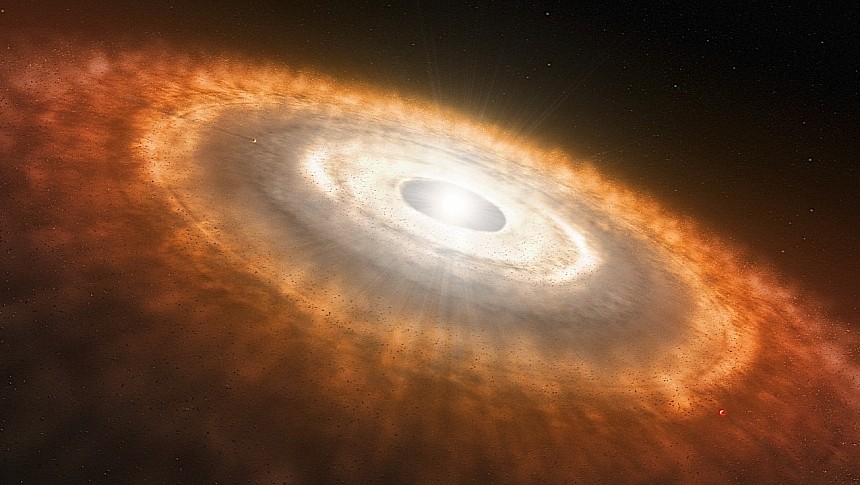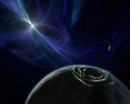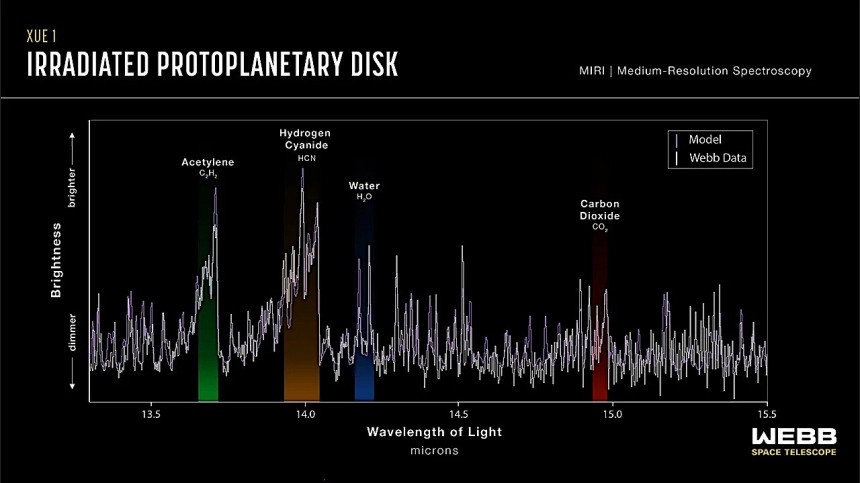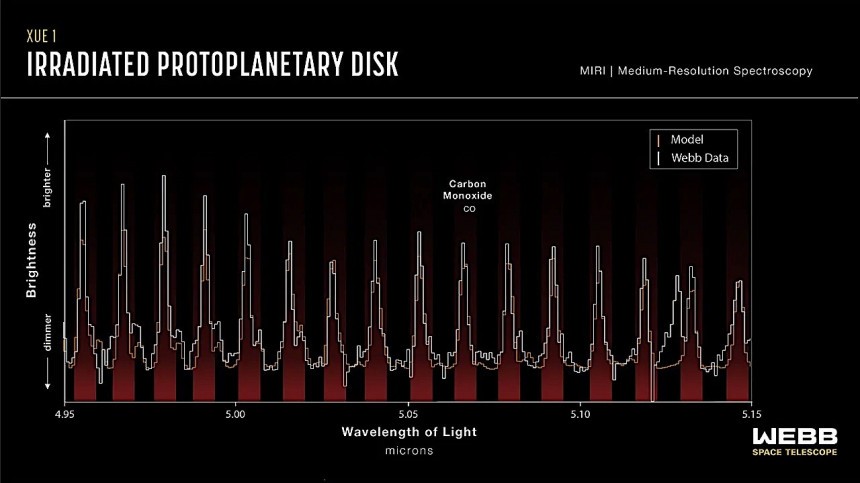It's extremely difficult to think about something so large that it's impossible to properly estimate anything about it. Yet so is the Universe that holds us, a place so big an eternity would probably not be enough to study it all.
Since our species has become aware the planet it resides on is by no means the center of the Universe, our knowledge about the vastness that surrounds us has however grown exponentially. True, we haven't even scratched the surface, but the technology now at our disposal allows us to learn a lot more a lot faster than ever before.
One amazing piece of technology helping us with that is the James Webb Space Telescope (JWST), the largest, most powerful, and most expensive telescope humanity has ever designed.
The hardware was launched in 2021 and reached its resting place at the the Sun-Earth Lagrange point L2 in the first month of the following year. That means it will soon celebrate its second year in space, a short timeframe by any standards, but more than enough for the telescope to turn some things we knew about space on their head, reveal a wealth of never-before-seen images, and teach us a thing or two we didn't already know.
Part of the last category of Webb accomplishments is the finding that rocky planets could be much more abundant that we previously thought, as it seems they can also form in much broader and more hostile environments than previously thought.
It's impossible to estimate how many rocky planets are out there. That hasn't stopped people from trying, and according to a 2020 study of Kepler data pointed to around six billion of them, Earth-like, being around in our Milky Way galaxy alone.
The exact number of rocky planets is one of the many things we will never know about our Universe, but Webb could help shed a bit more light on how and where they could form.
The telescope is conducting simultaneous science programs in space, and one of them is called eXtreme Ultraviolet Environments (XUE). It's an effort that focuses on the "characterization of planet-forming disks […] in massive star-forming regions.”
What that means is some of the telescope's instruments, including the Medium Resolution Spectrometer, are actively looking at the incredibly large clouds of gas, dust, and rock (the so-called disks) that spin around some stars and eventually lead to the birth of new planets.
The eye in the sky is presently trained on the Lobster Nebula (NGC 6357), a place located some 5,500 light years away from our world in the constellation Scorpius. Of that nebula scientists here on Earth have picked three areas, and narrowing things down even further, 15 such disks are of particular interest.
The location was chosen as an object of study because it is one of the youngest nebulas around, but also because it's relatively close to us. It also happens that the place is home to some of the largest stars in our galaxy.
The fact it has massive stars helps because they emit tons more ultraviolet (UV) radiation, and that in turn allows Webb to learn more on how UV affects the planet-forming regions that sit around stars not unlike Sol's own Sun.
A paper published recently in The Astrophysical Journal talks about what Webb found in a protoplanetary disk called XUE 1. Located in the Pismis 24 star cluster, the disk shows signs of allowing the formation of rocky planets in the highly irradiated vicinity of the star.
More to the point, the telescope found molecules of water, carbon monoxide, carbon dioxide, hydrogen cyanide, and acetylene right there, and this is a first in astronomy. Combining that with traces of partially crystalline silicate dust, a prerequisite of rocky planet formation, leads astronomers to believe such celestial bodies can form even in such extreme environments.
In simpler words, we now know the conditions for planet formation exist even in the inner disk, allowing for the speculation that they “can form in a much broader range of environments than previously believed.”
Given how this is the first time this was observed, further studies will be needed. The bottom line of them all will be to establish just how common planet formation is in these regions. Technically, scientists now want to know whether what Webb found in the Lobster Nebula is the exception or the rule.
To get an answer to that the Webb will now focus its efforts on other disks in the same part of the sky. As per the team behind the study, “these regions are likely representative of the environment in which most planetary systems formed.“
One of the benefits coming from this will be a better understanding of how the environment impacts planet formation, but will probably also enable more insight into the different types of planets we know to exist beyond the borders of our solar system.
One amazing piece of technology helping us with that is the James Webb Space Telescope (JWST), the largest, most powerful, and most expensive telescope humanity has ever designed.
The hardware was launched in 2021 and reached its resting place at the the Sun-Earth Lagrange point L2 in the first month of the following year. That means it will soon celebrate its second year in space, a short timeframe by any standards, but more than enough for the telescope to turn some things we knew about space on their head, reveal a wealth of never-before-seen images, and teach us a thing or two we didn't already know.
Part of the last category of Webb accomplishments is the finding that rocky planets could be much more abundant that we previously thought, as it seems they can also form in much broader and more hostile environments than previously thought.
It's impossible to estimate how many rocky planets are out there. That hasn't stopped people from trying, and according to a 2020 study of Kepler data pointed to around six billion of them, Earth-like, being around in our Milky Way galaxy alone.
The exact number of rocky planets is one of the many things we will never know about our Universe, but Webb could help shed a bit more light on how and where they could form.
What that means is some of the telescope's instruments, including the Medium Resolution Spectrometer, are actively looking at the incredibly large clouds of gas, dust, and rock (the so-called disks) that spin around some stars and eventually lead to the birth of new planets.
The eye in the sky is presently trained on the Lobster Nebula (NGC 6357), a place located some 5,500 light years away from our world in the constellation Scorpius. Of that nebula scientists here on Earth have picked three areas, and narrowing things down even further, 15 such disks are of particular interest.
The location was chosen as an object of study because it is one of the youngest nebulas around, but also because it's relatively close to us. It also happens that the place is home to some of the largest stars in our galaxy.
The fact it has massive stars helps because they emit tons more ultraviolet (UV) radiation, and that in turn allows Webb to learn more on how UV affects the planet-forming regions that sit around stars not unlike Sol's own Sun.
A paper published recently in The Astrophysical Journal talks about what Webb found in a protoplanetary disk called XUE 1. Located in the Pismis 24 star cluster, the disk shows signs of allowing the formation of rocky planets in the highly irradiated vicinity of the star.
More to the point, the telescope found molecules of water, carbon monoxide, carbon dioxide, hydrogen cyanide, and acetylene right there, and this is a first in astronomy. Combining that with traces of partially crystalline silicate dust, a prerequisite of rocky planet formation, leads astronomers to believe such celestial bodies can form even in such extreme environments.
Given how this is the first time this was observed, further studies will be needed. The bottom line of them all will be to establish just how common planet formation is in these regions. Technically, scientists now want to know whether what Webb found in the Lobster Nebula is the exception or the rule.
To get an answer to that the Webb will now focus its efforts on other disks in the same part of the sky. As per the team behind the study, “these regions are likely representative of the environment in which most planetary systems formed.“
One of the benefits coming from this will be a better understanding of how the environment impacts planet formation, but will probably also enable more insight into the different types of planets we know to exist beyond the borders of our solar system.








